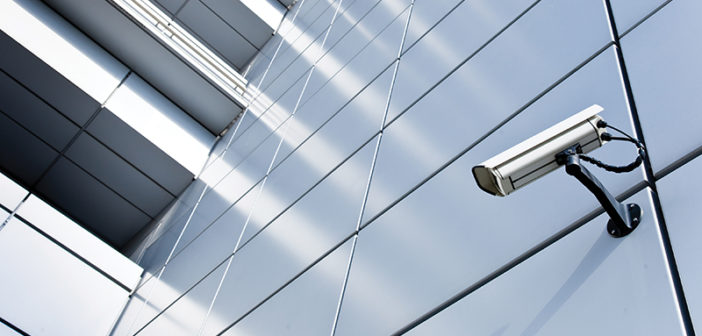NATIONAL REPORT—Providing adequate perimeter security is essential to protecting a property. What’s key to ensuring the safety and welfare of guests is a system in place designed to monitor movement, establish barriers and implement the latest technology.
“Perimeter security is one of the more important parts of securing a property,” said Dick Hudak, managing partner at Resort Security Consulting Inc. “The fact of the matter is that it’s the first step toward access controls, and what security is all about is being able to have access controls—and [this]requires monitoring to be effective.”
There are several ways properties can monitor who’s coming in and out. These methods include leveraging biometric and facial recognition systems; analyzing camera data; and using security officers and other on-site property personnel to recognize people (no matter who they are). “The point is that guests like to be recognized, staff members like to be recognized—bad guys don’t like to be recognized,” he said.
“Hotels are difficult because there’s hospitality sensitivity,” he said, pointing out how other properties, like a military reservation, for example, are more likely to use strenuous monitoring.
Monitoring is how properties can protect themselves and guests from dangers like potential intruders. “Understanding the facilities’ needs and applying that to access control is key,” said Mike Lopes, senior product manager of lodging systems at Dormakaba Group. “Best practices are to have a dedicated electronic access control management system administrator. It’s common that system knowledge can be lost due to staff turnover. Common mistakes are the key/lock system isn’t used to its full capabilities due to the lack of the above.
“Common threats to properties are non-registered people wandering the facility, which is a safety concern and a major liability, especially in a swimming pool area, for example,” he explained. “This also results in the usage of amenities, which can impact revenue, trigger crowding and commotion, and negatively impact the sense of exclusiveness, security and privacy that customer is seeking at a hotel or resort.”
Other potential threats to properties (especially casinos and properties located within the perimeter of downtown areas) include door pushers. “These could also be called wandering intruders; they walk the facility and the corridors, applying pressure to the doors to see if they were properly closed by guests and staff,” Lopes added.
Using a concept (or theory) called “Concentric Circles of Protection,” a property can evaluate its security by constructing layers (or rings) of protection. These rings begin at the property line and decrease in size toward the guestroom (the final concentric circle). “Think in terms of a big circle—a circle into the building itself, the structure, and then a smaller circle at the guestroom,” Hudak explained, adding, “Those perimeters all count.”
Establishing a perimeter isn’t always easy, however; for example, downtown conference hotels or casinos pose a challenge to security experts. “You don’t have the chance to establish a perimeter—it’s the sidewalk, so you’re limited in many respects,” he said. These properties lack standoff (basically, barriers between a property and its vital locations, such as the main entrance, a side entrance or even a loading dock).
One way to establish a perimeter is by using the environment (known as crime prevention through environmental design). “You use the environment to create your perimeter and to limit access to your property,” Hudak noted. Of course, a property situated in an urban environment has its own restrictions. Bollards become an option for many of these locations, especially retractable ones. “New York uses them quite a bit,” he said. Additionally, fencing can also be used, as well as various types of lighting. Defining where the property’s line begins is essential to securing the grounds.
Ideally, a property should consider perimeter security immediately (before construction even begins); however, many times security experts don’t have this luxury (especially if a property switches security companies). “You have to come behind a situation that’s already established and do the best you can to recreate a perimeter situation,” Hudak said.
Industry security standards have become even more stringent over the years. “Anti-tamper methods have improved,” Lopes said. “Electronic locks run independent from the access control management software. Any network/system outage will not impact keyword access to perimeter locks and guestroom locks. Most lock models are powered by battery and uninterrupted power supplies are used where needed.”
There’s also been a rise in a focus on elevator access. More and more properties are securing floors and elevator stops. “Valid key cards are required to either call the elevator or select the specific floor the key is associated with,” Lopes said. “Auto-destination elevators are becoming more popular in the past few years. This solution is where a valid RFID credential is required to call the elevator and the rest of the process is automated, where the elevator company reads the credential information and automatically takes you to your floor without requiring you to select floor buttons.”
“Leveraging the lock access control management software and electronic locks for perimeter security should be considered,” Lopes said. “There are many hardware solutions properties can install, which include panic hardware locks, magnetic door locks, electric strikes, parking gates and even turnstiles. All entrances to the facility, pool areas, fitness centers, executive areas, parking lots and employee areas can be controlled and managed when integrating with the electronic access control system.”
Access control management software can configure electronic locks controlling the perimeter locking hardware, allowing valid keys to access specific areas, hours of the day and specific days of the week. “An extra add-on that can be considered is an ‘online’ wireless solution for electronic locks,” he said. “Various commands can be sent remotely to the locks such as guest lockout, electronic lockouts in certain tragic events, and lost key cancellation. Online systems also reduce total cost of ownership.”
Ultimately, security assessments should be made by someone who has security expertise in hospitality and who compares the right data sets. “If that composite indicates I’ve got more threat of cars being stolen from the parking lot, or rooms being breached, or if I’ve had a number of robberies, for instance, then I work to provide counteractions that can limit those activities,” Hudak. “That’s how you get a good assessment and survey done—by working all those data resources.” HB
Preparation, training critical to assisting tech
NATIONAL REPORT—Every June, the National Safety Council (NSC) promotes the observation of National Safety Month in order to focus on reducing injury in all aspects of life. For the lodging industry, and many other sectors, security and safety complement one another. That being said, properties may want to take some time out of the month to review safety and security programs, and security protocol with employees.
“While hotels should focus on safety throughout the year, this is a special time to really make safety a priority,” said Bryan Smith, Koorsen Fire and Security’s director of security business. “This is a time to review your safety program, look at what’s working and what needs improvement. It’s also a good time to go over all of your safety precautions, possible scenarios, act out drills, etc., with your employees. This will help keep safety top of mind for all employees.”
What are some key mistakes hotel owners are making when it comes to safety? Neglecting security protocols and programs. “An effective hotel security program requires a comprehensive approach that entails a continuous reevaluation of current policies, training and security systems,” he said. “What may be effective today will inevitably lead to vulnerabilities a year from now. It’s essential to constantly update security measures and make sure that all staff members are trained accordingly.”
Proper training on security threats needs to be mandatory for all employees carrying out security policies. These classes should ideally cover a couple of essential topic areas: assessing guest behavior and identifying authentic security threats. “Attentiveness naturally plays a big role in guest service, but it’s also a contributing factor when it comes to security policies,” Smith explained. “Someone with criminal intentions may consider abandoning his plans when he witnesses how well monitored guest activity is, sending the message that any attempt to compromise security will be reacted to quickly.” Preparation is key.
For instance, properties should always include emergency procedures on how to handle intruders and when to contact authorities. “Practice sessions can be done much like fire drills to ensure all staff members are prepared for any security breaches and can react appropriately,” Smith noted. “Emergency training should also include instructing staff on how to operate fire and safety equipment—such as fire extinguishers. Whether training on general security tasks or emergency procedures, the underlying goal should be striking a successful balance of security demands and a welcoming atmosphere.”
National Safety Month is also the perfect time to ensure everything is working properly: card access systems, fire alarm panels and surveillance cameras. “Contact your local commercial security provider for a professional inspection of these vital systems,” he said.
Implementing new security initiatives can be challenging for many properties; however, communicating clearly with employees can help hotels overcome many obstacles. “While there aren’t any codes or regulations that speak directly to the frequency with which training should be provided, doing so on a regular basis will greatly impact the businesses’ ability to protect themselves from security risks in the future,” Smith said.
Oftentimes, the greatest threat to security at a property is a lack of training and knowledge on the part of its employees. “While a door may have a card access system installed, leaving that door propped open for any length of time provides the opportunity for an intrusion to occur,” Smith noted. For him, having security equipment isn’t enough; at the end of the day, it must also be properly installed and implemented.
“In addition to being installed properly, professional monitoring is imperative to keeping a hotel safe 24/7/365,” he explained. “Work with a trusted commercial security partner to ensure that equipment is properly installed and monitored.”—CJ Arlotta


